Halle Gate
| Halle Gate | |
|---|---|
| Porte de Hal/Hallepoort | |
| Part of Second City Walls of Brussels | |
| Brussels, Belgium | |
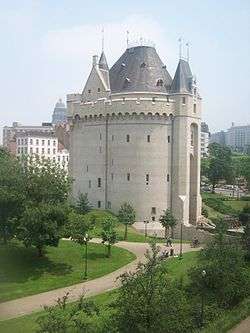 Halle Gate in 2008 | |
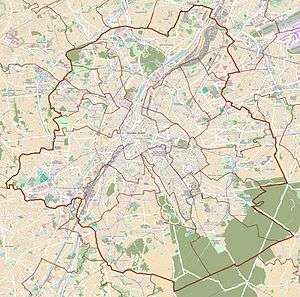 Halle Gate | |
| Coordinates | 50°49′59″N 4°20′42″E / 50.8330°N 4.3449°E |
| Type | City gate |
| Site information | |
| Controlled by | Royal Museums of Art and History |
| Open to the public | Yes |
| Site history | |
| Built | 1381 |
| Materials | Stone |
The Halle Gate (French: Porte de Hal, Dutch: Hallepoort) is a medieval fortified city gate of the second walls of Brussels.[1] It is now a museum, part of the Royal Museums for Art and History.
History
Built in 1381, Halle Gate is a 14th-century city gate from the second set of defensive walls that enclosed Brussels. The gate was named for the city of Halle (French: Hal), now located in Flemish Brabant, which it faces.
The original gate included a portcullis and drawbridge over a moat. The structures that housed these are still visible.
While the other six gateways and the defensive walls were demolished, the Halle Gate survived as it was used as a prison. It was at other times used as a customs house, for grain storage, and a Lutheran church.
19th century restoration
%2C_Brussels%2C_Belgium_(ca._1890-1900).jpg)
The architect Henri Beyaert restored the building between 1868 and 1870, changing the austere medieval tower with more romantic Neo Gothic embellishments.[1] The outer entrance, now facing Sint-Gillis/Saint-Gilles, is closer to the original appearance. In front of the inner gate, facing the city of Brussels, Beyaert added a circular tower topped by a conical roof, containing a monumental spiral staircase. Beyaert also added turrets and a large roof.
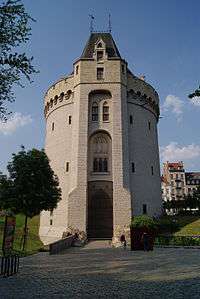 Halle Gate in 2011, Sint-Gillis (Saint-Gilles) side |
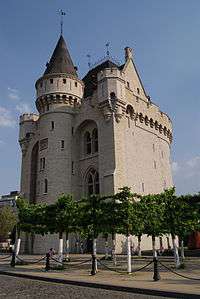 Halle Gate in 2011, City of Brussels side |
Museum
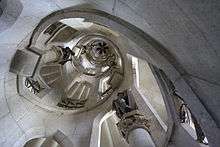
In 1847, the Halle Gate became part of Belgium's Musée Royal d'Armures, d'Antiquités et d'Ethnologie (Museum of Armour, Antiquity and Ethnology), now named the Royal Museums for Art and History. By 1889, the Halle Gate was too small to house most of the collection, and most was relocated to the Cinquantenaire/Jubelpark Museum. It continued to display armour and weapons.
In 1976, the building was in a dangerous state of disrepair and was closed. Finally, renovations began, and the Gate was reopened in 1991. Further restoration was stalled by lack of money, and the museum only housed temporary exhibitions.
In March 2007, a new extensive restoration was begun. The Halle Gate finally reopened on 6 June 2008. Finally, the St Gilles (drawbridge) entrance was opened as the prestigious main entrance to the building. The museum includes exhibits about the history of the building, and of the city of Brussels and its defence. The collection includes the parade armor of Archduke Albert of Austria. The main parts of the museum, each on a separate floor, are:
- Armour and Armaments, in a small room off the central passage
- the Gothic Room, above, containing the history of the fortifications of Brussels and of the Halle Gate
- the Guilds Room, showing the role of the trade guilds of the city
- a temporary exhibition space
- a walkway round the battlements, offering a panorama of the city
- the roof space for small exhibitions
Accessibility
This site is served by the metro station Porte de Hal/Hallepoort on lines 2 and 6 of the Brussels metro.
References
- 1 2 Fun, Everything is (2017-03-10). "Halle Gate | Brussels Museums". Brussels Museums. Retrieved 2018-06-14.
External links
| Wikimedia Commons has media related to Porte de Hal/Hallepoort. |